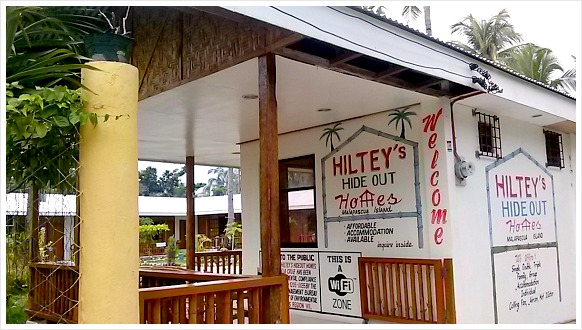"Cebu Research Publication
& Media Activities..."
Environmental Cebu Research Publication, and Media Activities
Research, publication, and media activities are another effective strategies that the Philippine NGOs have been employing to influence environmental policymaking.
This is, of course, quite common practice among international environmental NGOs, such as Greenpeace and Friends of the Earth, in convincing world leaders to change or formulate particular policies.
Scientific research, media and publication is the strategy being employed by Greenpeace, for example, using telephones, fax machines, televisions, and satellite uplinks to communicate their information worldwide—such as footage of whaling expeditions, ocean dumping of nuclear wastes, discharging toxic waste into water systems, among various environmental threats (Wapner 1996).
In the same manner, many Philippine environmental NGOs employ this strategy as part of their activities to influence policymaking through nonviolent actions. One of the most convincing activities in this category is a science-based research because of its intrinsic credibility. Rydin (2004:97) explains the relevance of science in the field of environmental policymaking process:
The reliance of scientific knowledge has become a key element of environmental policy. It is commonplace to find arguments that ‘sound science’ should be the basis of such policy and, organizationally, scientific advisers are found in relatively central locations within many bodies from the World Bank down to local councils.
Our appreciation of the very existence and extent of environmental problems such as global warming, loss of biodiversity, and depletion of the ozone layer arises from the activities of scientists… these are ‘invisible’ problems, which can only be ‘seen’ through the medium of scientific techniques.
All NGOs included in this research have various forms of activities belonging to this category. One that can be a model in this category is Tanggol Kalikasan’s (Nature Defense) use of mainstream “tri-media” (publication, television and radio) to “keep the public informed of environmental issues and resolutions” (www.tanggolkalikasan.org).
The organization employs its Mainstreaming Environmental Information and Education Campaign (MEIEC) Program, which includes the production of radio and television programs, and the production of documentaries—such as field interviews of environmental area volunteers for the protected areas (sea, forest, watersheds, etc.).
In addition, Tanggol Kalikasan also publishes informative materials related with environmental laws to “instill awareness and transfer skills to enable local communities to promote and protect their interests in the environment” (TK website).
Through such activities, Tanggol Kalikasan has been able to get help from the government through the local government unit (LGU) officials’ cooperation by monitoring the environmental laws and policies’ observance, as well as securing protection from the Philippine Armed Forces (AFP) against armed violators who harass and threaten local volunteers for sea and forest parks.
Haribon's Scientific Research (Cebu Research Publication)
The scientific research on biodiversity by Haribon Foundation (in collaboration with Birdlife International) resulted in the publication of Threatened Birds of the Philippines, the Philippine Red Data Book which compiles comprehensive data of the country’s endangered birds (see www.haribon.org.ph).
The Red Data Book project, which identified 117 Important Biodiversity Areas (IBAs), is compiled in the book Key Conservation Sites in the Philippines. The publication of this book and other Haribon Publication materials eventually established the National Integrated Protection Areas System (NIPAS) Act enacted in 1992 (Republic Act No. 7586).
This Act “serves as the legal basis for the ‘In Situ’ conservation of biological diversity through the appropriate management of ecologically important areas for conservation and sustainable development” (http://www.psdn.org.ph/chmbio/dao25.html).
Advantages of Employing (Cebu) Research Publication & Media Strategy
Having seen some activities related to this category, it seems that this strategy could not only be very interesting but also comprise a powerful tool in seeking to influence environmental policies. There are some major advantages that need to be acknowledged at this point.
First, employing this strategy is a means by which specific groups/large scale populations can be targeted with the minimum of energy effort.
However, to be more efficient and effective the strategy should seek to capture people’s imaginations by appealing to their sensitivities and making it worth their time and effort.
Employing new techniques such as styles, story, genre, colors, sounds, etc. in books, magazines, videos, films, and other multimedia products can be great asset in helping to promote one’s cause.
Second, employing this category to convince, influence, or change one’s views, it must first answer fundamental questions or the FAQs, especially for those who lack knowledge about the issue at hand. In addition, research results, publications and multimedia should lead one to further research, study and search for deeper truth of the matter.
And next, it should endeavor to make people do something or be challenged to do difficult tasks; it should make one more responsible for the cause; or, it can make one begin by doing little things, such as volunteering, donating, planting trees, among others.
Putting together the three potentials of this category, one can fairly say that Al Gore’s research and study about climate change, which culminated into the creation of An Inconvenient Truth, could be a classic example of this endeavor to influence people.
Research, Publication, and Media has also been shown to be a potent means in affecting environmental policymaking. For example, important science-based research done by the Haribon Foundation produces materials that outline critical biodiversity areas in the country leading to the establishment of pertinent environmental laws and policies by the government.
Now, let's put into practice and make these valuable materials a reality.
Hope this Cebu research publication provides you new information in your quest for environmental protection materials.
Return to Cebu Environmental Page from Cebu Research Publication
Return to Bluewaters Home from Cebu Research Publication
Book Your Activity Here...
Please Like, Share...
Leave Messages...
|
|
Book & confirm your hotel room quickly and safely with Agoda Company. Agoda uses a state-of-the-art technology when processing your transaction online. Traveling Cebu is Agoda's official partner for eight years now. Find now your hotel here or below.



